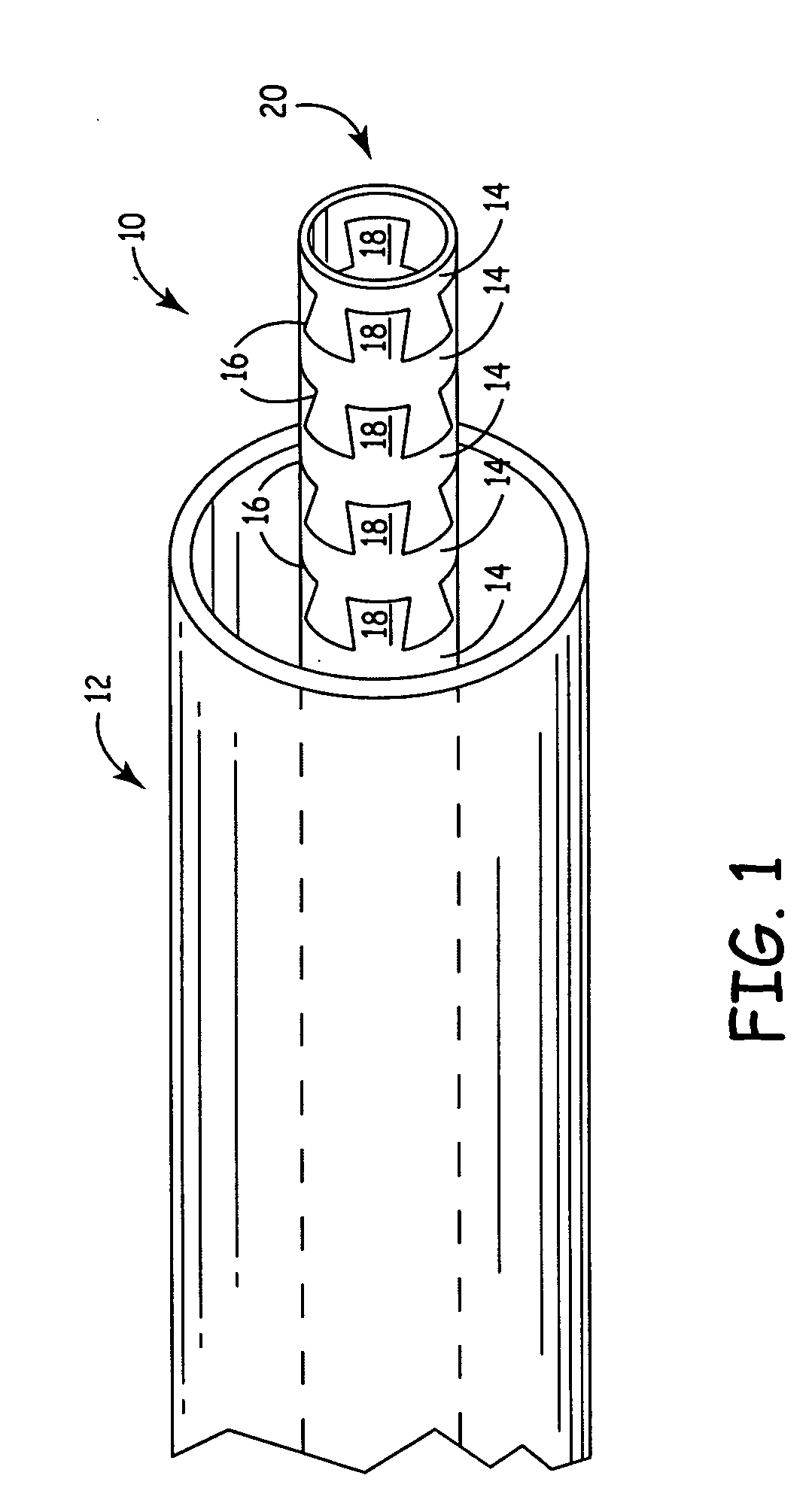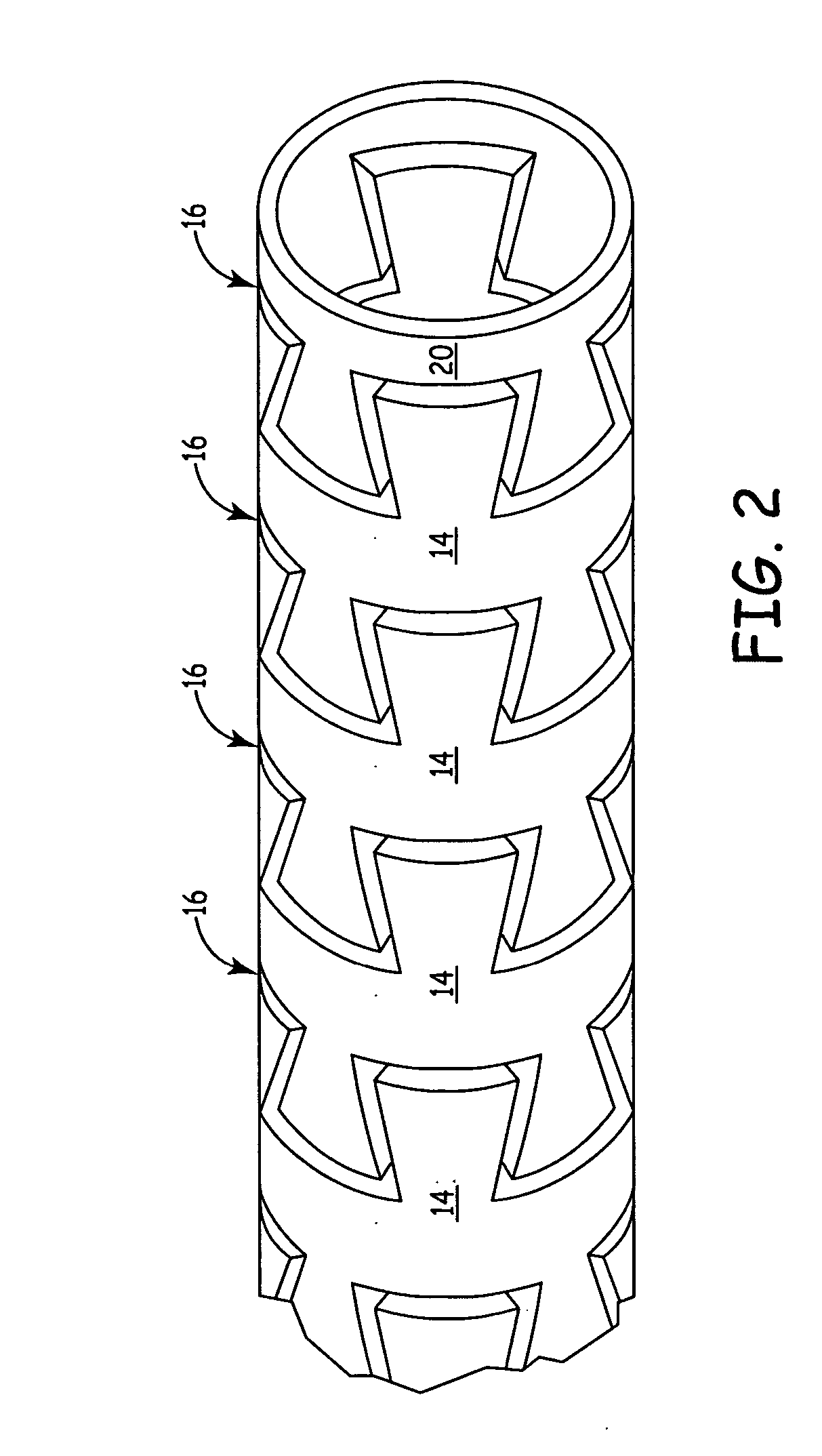Flexible center connection for occlusion device
a center connection and occlusion device technology, applied in the field of flexible center connection, can solve the problems of guide wire buckle, inability to reach the treatment site, and inability of physicians to reach the treatment site, and achieve the effect of improving torque and flexure characteristics, effectively closing a physical anomaly, and increasing flexibility
- Summary
- Abstract
- Description
- Claims
- Application Information
AI Technical Summary
Benefits of technology
Problems solved by technology
Method used
Image
Examples
Embodiment Construction
[0025]FIG. 1 is a perspective side view of a tubular device 10 extending through a catheter 12. The tubular device 10 is comprised of a plurality of interlocking portions 14 separated by channels 16. The interlocking portions 14 comprise a series of dovetail cut interlocking teeth 18 shaped so that the interlocking portions 14 do not disconnect from one another. The interlocking portions 14 are separated by channels 16 which can expand axially to give the device 10 increased flexibility or compress axially for increased rigidity. An end segment 20 terminates the device 10 and may be modified to provide an attachment site for additional devices.
[0026] In the embodiment shown in FIG. 1, the delivery device 10 is constructed of a plurality of interlocking portions 14 cut from a single tube. The tube is preferably surgical hypotubing made of stainless steel, titanium, nickel titanium, or another suitable material. The interlocking portions 14 of the delivery device 10 are formed by cut...
PUM
 Login to View More
Login to View More Abstract
Description
Claims
Application Information
 Login to View More
Login to View More - R&D
- Intellectual Property
- Life Sciences
- Materials
- Tech Scout
- Unparalleled Data Quality
- Higher Quality Content
- 60% Fewer Hallucinations
Browse by: Latest US Patents, China's latest patents, Technical Efficacy Thesaurus, Application Domain, Technology Topic, Popular Technical Reports.
© 2025 PatSnap. All rights reserved.Legal|Privacy policy|Modern Slavery Act Transparency Statement|Sitemap|About US| Contact US: help@patsnap.com



